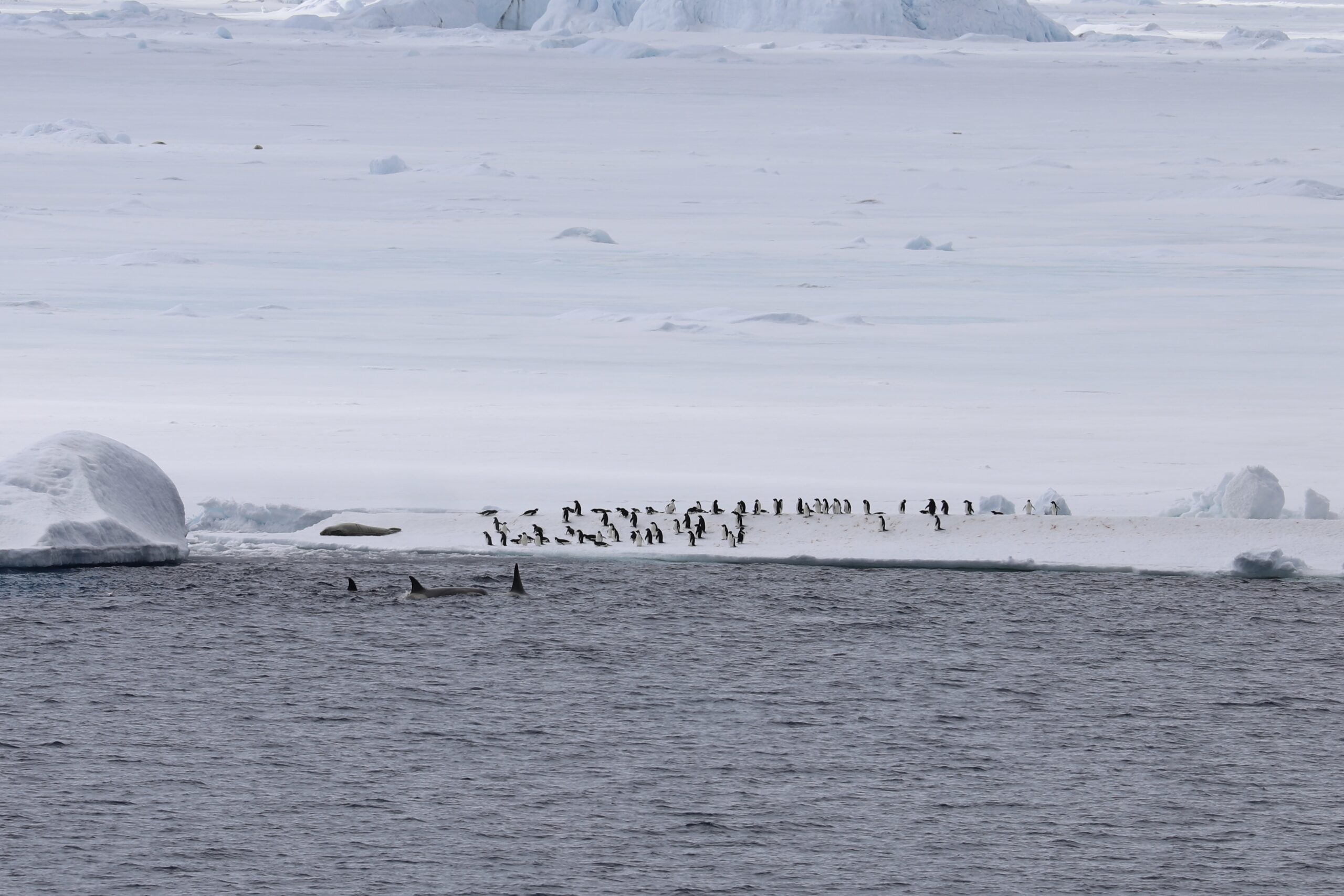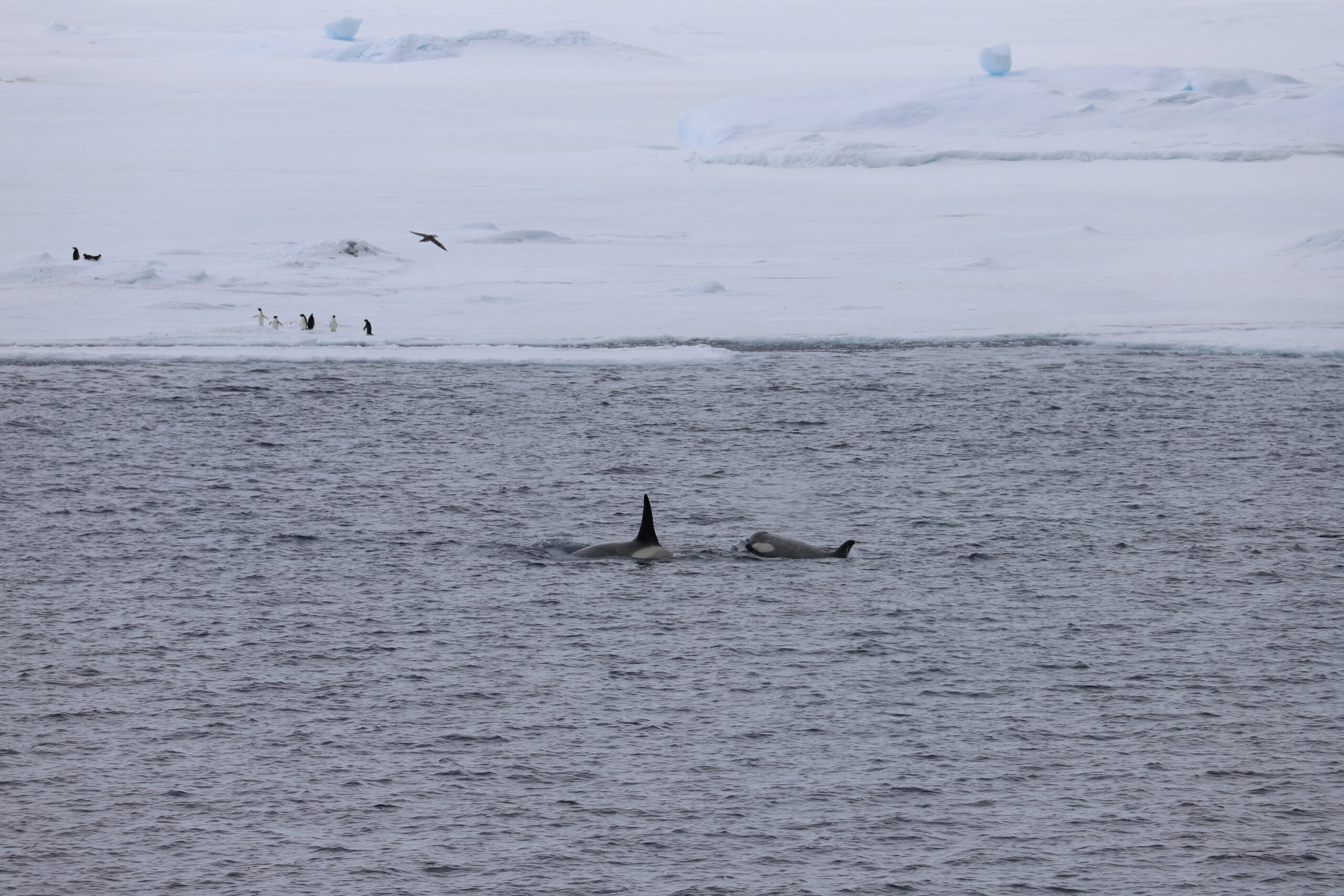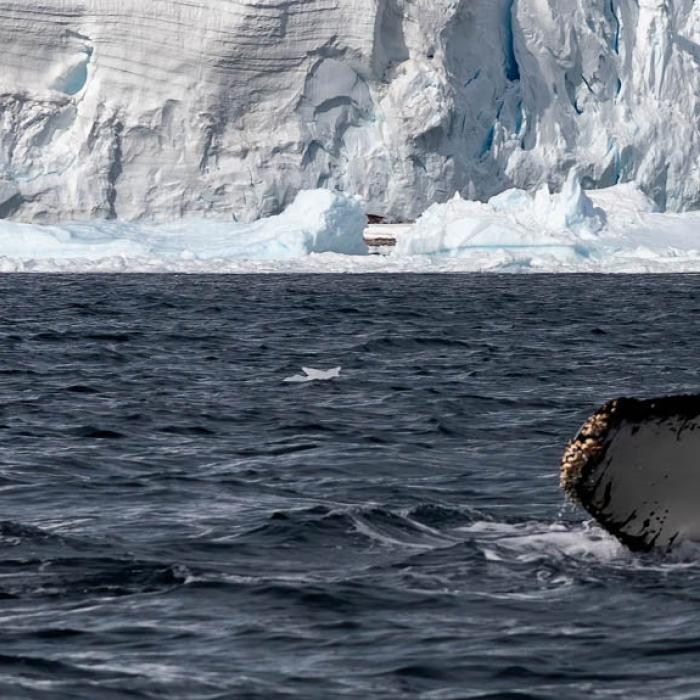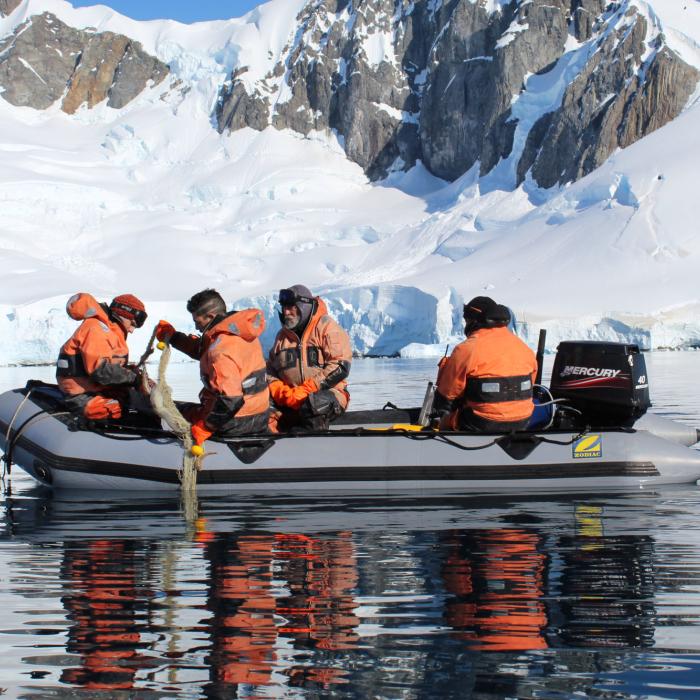
Orca – How You Can Protect Antarctica’s Apex Predator
Celebrated since 2014, World Orca Day raises awareness of conservation threats faced by these incredible animals worldwide. In the wake of this special day on July 14, Kate Weston-McDowell, Ocean Conservationist Manager at ORCA, describes the unique types of orca found in the Southern Ocean, the challenges they face, and how Antarctic Ambassadors can help from afar.
Orca are one of the most iconic species of cetacean (whales, dolphins and porpoises) in the world, but although they are also known as killer whales, they are, in fact, the largest species of dolphin. This moniker is thought to have come from the nickname “whale killer”, given to them by fishermen after watching them hunt. Measuring up to 10m (32ft) in length, these marine giants are found in nearly all the world's oceans, from warm tropical waters to the icy cold waters of Antarctica.
Although currently, there is only one species of orca (Orcinus orca), this single species can be broken down into multiple groups known as ecotypes; a socially or genetically distinct population adapted to local environmental conditions.
There are known to be at least five distinct ecotypes in Antarctica - Type A, B1 (large), B2 (small) C and D. Each ecotype has its own preferences for habitat, some preferring open water, while others are found in pack ice, and prey types ranging from large whales to penguins. If you’re lucky enough to visit Antarctica, you’ll surely be looking to spot them on your journey.
At first glance, the different ecotypes can be challenging to distinguish from one another. However, it’s not just their appearance which helps us identify these animals into their groupings. A combination of their size, diet, habitat and appearance can give us the clues we need to identify these iconic animals. Type A orca, for example, are offshore animals and prefer ice-free water. These large - up to 9.2m – (30ft) apex predators specialise in hunting Antarctic minke whales and elephant seal. They are typically found in groups of 10-15 individuals. Like all orca, they remain in family groups for most of their lives.
 Orca seeking penguin prey. Credit: Kate Weston-McDowell
Orca seeking penguin prey. Credit: Kate Weston-McDowell
By comparison, Small Type B orca, also known as B2 or Gerlache orcas, are often found in open water, in areas like the Gerlache Strait and Antarctic. Although their diet is not fully known, they have been seen hunting penguins and are often spotted around penguin colonies. Gerlache orcas reach around 7m (22ft) in length and are often covered in a yellowish film of diatoms, microscopic plant-like organisms. This build-up of algae is a normal part of life for countless Antarctic orca, and many will make a 42-day round trip of over 5,000 miles for a tropical vacation to shed this film – think of it a bit like a tropical spa!
Large Type Bs (B1), although similar in appearance to the Gerlache orcas, can reach up to 9m in length and prefer to hunt around dense pack ice and ice floes, earning them the name of “pack ice killer whales”. This ecotype developed a distinct hunting technique known as wave washing. The coordinated, and rather impressive, hunt involves the pod using their tails to create waves that break ice floes into more manageable chunks. The pod will then use their powerful tails again to create a second wave which washes over the top of the floe, forcing a resting seal off its perch into the water and the waiting jaws of a hungry orca.
Type Cs are the smallest of the Antarctic ecotypes, reaching maximum lengths of about 6m (20ft). They are most often found in the Ross Sea, which is a shallower body of water off the coast of Antarctica and due south of New Zealand. Unlike other Antarctic orca, this ecotype is known for eating Antarctic toothfish, Dissostichus mawsoni. Scientists are unsure of how much the type C orca diet consists of Antarctic toothfish, but there are concerns that commercial fishing in the region may threaten them in the future.
 Pod of orca in Antarctic waters. Credit: Kate Weston-McDowell
Pod of orca in Antarctic waters. Credit: Kate Weston-McDowell
That then leaves the mysterious Type D, or subantarctic orcas. First discovered in the 1950s after a mass stranding event in New Zealand, Type Ds have an extremely small eye patch, making them easily recognisable. There have only been a handful of sightings of these orca, so little is known about their dietary preferences or preferred habitat. If you are lucky enough to spot them, you’ve experienced a rare treat!
Orca in Antarctic waters are highly specialised to this environment and have survived here thanks to their intelligence, social bonds and unique hunting techniques. However, while these waters appear pristine and untouched, there are sadly many threats facing orcas in Antarctica today.
Climate change, is a long-term problem causing significant ice retreat, making it harder for ice-specialists such as the Large Type-B orca to find prey. Melting sea ice is also decreasing available habitat for krill, a small shrimp-like creature which is the basis for nearly all life in Antarctica from penguins to seals to baleen whales. This, combined with increased fishing pressure means that now, more than ever, protected zones, such as slow-down zones to minimise ship strike and no-take zones for krill fishing, are vital for protecting the whole ecosystem.
 Orca traveling in coastal waters. Credit: Kate Weston-McDowell
Orca traveling in coastal waters. Credit: Kate Weston-McDowell
Organisations like ORCA assess the population health of whales and dolphins in the Southern Ocean. Continued monitoring around Antarctica is vital to inform decisions around protection measures in the most impactful areas so we can continue to enjoy these charismatic animals for years to come. But there are things we can do from home in our everyday lives too:
Reducing your plastic usage
Plastic has been found in all the world’s oceans, and shockingly, a one litre plastic bottle can break down into enough tiny pieces that you could put a piece on every beach around the world. By reducing your plastic usage wherever you are, you can help keep even the most remote waters of Antarctica safe.
Collect trash from your local beach or park
Enhance your at-home efforts to reduce personal waste by heading to your nearest nature spot – like a park or beach – to help collect trash and prevent it finding its way into our waterways and eventually the sea. You could even turn it into a game with this Beach Clean-up Bingo card.
Report your whale sightings
Organisations like ORCA, using its OceanWatchers app, Happywhale and Orca Network collect scientific data which is used to identify and protect not only orca, but all whales and dolphins.
Become an Antarctic Ambassador
Help spread the word about the wonderful habitat and complete other tasks and challenges to support the region and the creatures that call it home.
Together, we can enjoy and protect the iconic orca not just on World Orca Day but beyond!

About the Author - Kate Weston-McDowell
Kate Weston-McDowell is the Ocean Conservationist Manager at ORCA, a whale and dolphin conservation charity dedicated to the long-term protection of whales, dolphins and porpoises around the world. Kate’s fascination with dolphins began on holidays in Wales sitting on seawalls waiting for those magical animals to appear. Since then, her passion for marine wildlife has taken her all over the world from Antarctica to Australia in the hopes to study, protect and raise awareness of the wonderful world of whales and dolphins.


